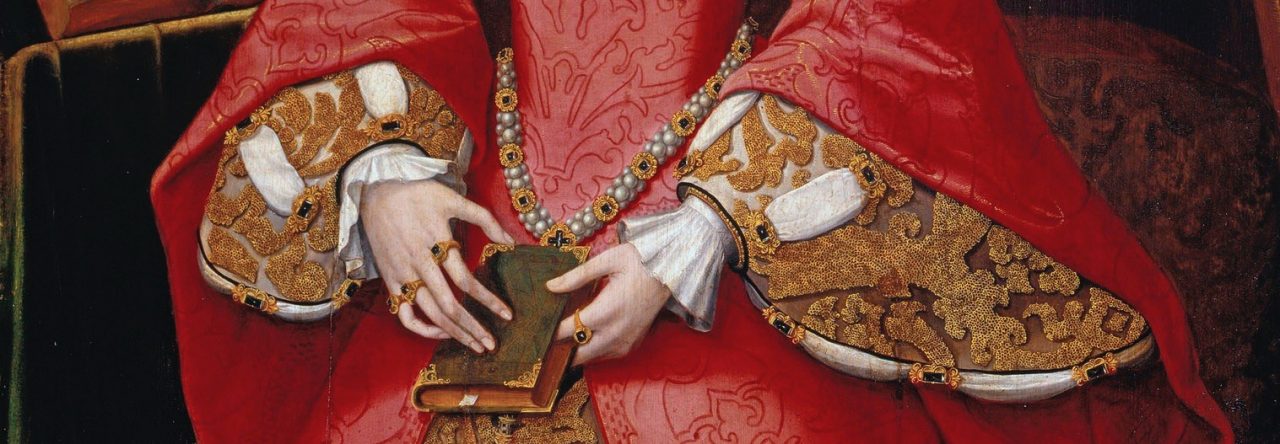
This is another installment in our series of blog posts Katherine Blount, who, as we have discovered, owned a formidable library. The more we look, the more we find. The search for Blount books started with a post by Sarah Lindenbaum, which was followed by posts by Sophie Floate, William Poole, and Mary Ann O’Donnell, who all added to the list compiled by Sarah. Then, most recently, Victoria Burke wrote for us on a manuscript miscellany that she could, with the help of evidence featured on the blog, identify definitively as written by Blount. The miscellany provides broad evidence of Blount’s reading, including many books not featured in our blog before, which were possibly part of the family library rather than Blount’s personal collection. Much work remains to be done in terms of identifying and locating the books from which she copied material in the miscellany manuscript.
Fortunately for us, Blount meticulously signed many of the books she owned, almost always including a date and often a price or a note about the person who gave her the book. I will not repeat the biographical facts of her life here since those can be found in any of the posts linked above. Her gift inscriptions show that she was frequently given books by her husband and other friends and relations, allowing us to begin to think about the networks of which she was a part. The particular book I concentrate on here is Vegetable Staticks by Stephen Hales. Vegetable Staticks was presented to Blount, her inscription shows, by Hales himself in 1727.

Who was Hales and why might Blount have been interested in this book? Stephen Hales (1677–1761), as the title page of the book tells us, was both a clergyman and a scientist. His main position, as Curate of Teddington, would have brought him in close proximity to Twickenham, the estate that was the primary residence of Blount and her husband, which is, according to Google Maps, a mere half an hour walk away.

Hales had become interested in science while at Cambridge and wrote a number of scientific works, making important discoveries and inventing various devices to benefit human health. Statick Vegetables is perhaps his most important work. The book collects Hales’s papers presented at the Royal Society on plant nutrition, considering the circulation of water and how plants acquire energy through air and possibly light. A section of the book is devoted to air chemistry, an important topic to Hales, who argued for the importance of air circulation to health and invented a kind of ventilator.
The entry on Hales in the Oxford Dictionary of National Biography quotes contemporary Gilbert White’s impressions of Hales:
“Gilbert White noted that ‘His whole mind seemed replete with experiment which of course gave a tincture and turn to his conversation often somewhat peculiar, but always interesting’. He listed a series of anecdotes to support this view, among which were Hales’s concern with the incrustation of ladies’ tea-kettles, his advising the use of showers of water to test the salubrity of wells, his directing air-holes to be let in the outer walls of rooms, his imploring young people not to drink their tea scalding hot, his ad hoc advice to ferrymen on how to maintain the bottoms of their boats, and his teaching housewives to place inverted teacups in their pies to prevent the syrup from boiling over.”
The conversations Blount may have had with Hales may have ranged from science and botany to cooking and tea kettles. We can only speculate, but the fact that he presented her with his book means that he must have felt she would be interested in biology. Perhaps he was looking for patronage. The books in Blount’s collection we have uncovered so far are generally not directly scientific though one book in the list of works mentioned in her miscellany, Thomas Sprat’s The History of the Royal-Society, tells us that she may have had an investment in the history of scientific discovery.
Blount’s Vegetable Staticks’s later provenance history is visible in a book plate belonging to Henry Carrington Bolton (1843–1903), an American professor of chemistry and science historian, whose interest in the subject is obvious and whose ownership may explain how the book has ended up in the Library of Congress today.

Our other posts on Blount do not show the bindings for her books, but the images below can prove helpful in the future in establishing her ownership of other works.


Source: Library of Congress, shelfmark QK711 .H2 1727. Images by the Library of Congress, used with permission.
Further Reading
Allan, D. G. C. “Hales, Stephen (1677–1761), natural philosopher.” Oxford Dictionary of National Biography. Oxford University Press, 2023.

Pingback: Thomas Pope Blount, Essays on Several Subjects (1697); Francis Bacon, Sylva Sylvarum, or, A Naturall Historie, comp. William Rawley (1685) – Early Modern Female Book Ownership
Pingback: Johannes Goedaert’s Of Insects, Translated into English by Martin Lister – Early Modern Female Book Ownership